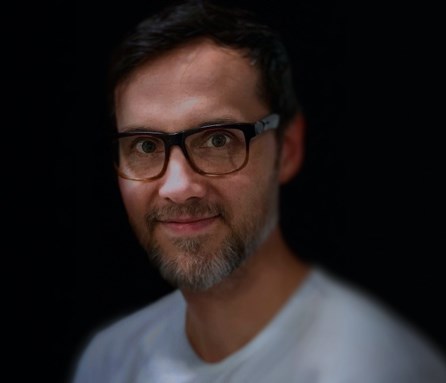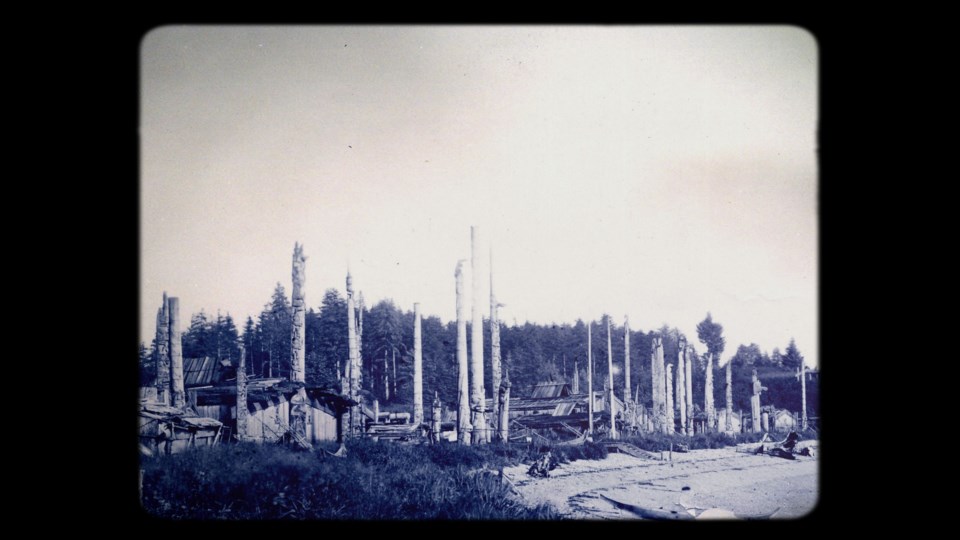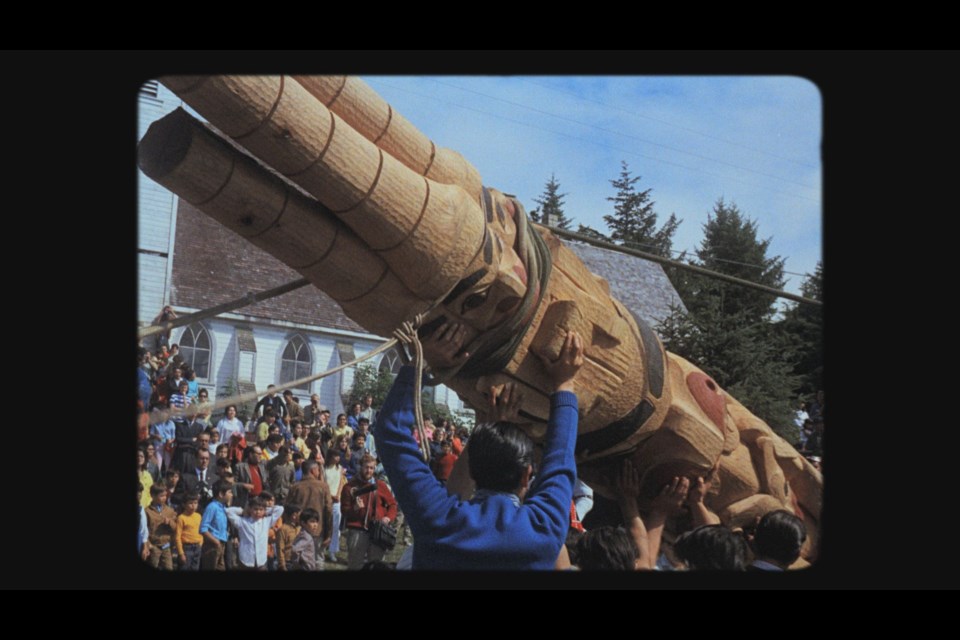Christopher Auchter’s path in life began taking shape early, in the lush forests and along the rocky coastlines of his Haida Gwaii home.
His current life as an animator, illustrator and filmmaker is rooted in the Haida culture he grew up in.
“If I didn’t grow up there, I think I would be doing something else,” he says.

Auchter, now a Burnaby resident, recently saw his National Film Board documentary Now Is The Time picked up by the New York Times Op-Docs – a series of short documentaries by filmmakers from around the world that can be watched online at www.nytimes.com/video/op-docs. The 16-minute documentary revisits a momentous occasion from 1969, when the Haida village of Masset raised its first totem pole in more than a century.
It was a time when Haida culture – the language, the song, the dance, the fashion, the art – was all but invisible. That moment on Aug. 22, 1969 when the totem pole was raised became symbolic of a renaissance of what had nearly been lost.
It was a story Auchter didn’t know. By the time he was born in 1980, Haida culture was already in a very different place.
“I grew up surrounded by our art form,” he said, noting his mom and his aunt made traditional Haida button blankets and ran a fashion business inspired by Haida designs, and signs of traditional culture were all around him. “You’d go to feasts and people would be singing the songs.”
Even after he left Haida Gwaii to pursue a career as an artist, studying media arts at Emily Carr University and computer animation at Sheridan College in Ontario, he found himself working against the backdrop of a burgeoning Haida arts scene.
He’s been inspired by the work of artists such as his own uncle, Michael Nicoll Yahgulanaas, known for the development of the “Haida manga” style, and he has seen his contemporaries build upon the works of the masters to create new styles.
“I see a kind of playfulness starting to happen with our art form,” he says. “I can see us still building on top of each other as we go.”
It was hard for him to believe there had been a time when all that had nearly been lost. In fact, he admits, he didn’t fully realize the extent of the near-eradication of Haida culture until he started working on this documentary.
Auchter was already known to the NFB, having previously made the multi-award-winning animated short The Mountain of SGaana, inspired by an old Haida fable. He was ready to pitch another animated project when the NFB approached him with a different plan: a new documentary to revisit a 50-year-old story that had been covered by the NFB’s Indian Film Crew, as it was then known. This Was The Time told the story of the totem pole carved by then-22-year-old Robert Davidson, but it was told from a non-Indigenous perspective (which Auchter politely describes as “patronizing”).
“It was definitely missing that perspective, that Haida perspective,” Auchter notes.

His film uses first-hand accounts from Davidson and his younger brother, Reg (whom Davidson paid to help with the carving), as well as Haida scholar Barbara Wilson, who had been a part of the NFB’s original film crew. Courtesy of a deep dive into both the National Film Board archives and the B.C. Archives, it also incorporates elders’ voices – including that of Joe Weir, who offers an explanation for why all the totem poles that had dominated the Masset landscape in the 1870s were nowhere to be seen by 1969.
The Haida people themselves took them down, Weir says, because the minister told them traditional Haida culture wouldn’t lead them to heaven.
“It was so strongly pushed, ‘Don’t do that, it’s a harmful type of art form,’” Auchter says, noting the religious sentiment against traditional culture was just one more step in a series of events that had the cumulative effect of nearly erasing Haida culture.
First there was smallpox, which nearly wiped out the population. Then there was the consolidation of the Haida people living throughout Haida Gwaii into two communities, Skidegate and Masset. There was the residential school era. There was the federal anti-potlatch law that prohibited traditional potlatch ceremonies between 1884 and as late as 1951.
The more Auchter researched the time period, the more he came to see the raising of Davidson’s totem pole as a turning point for the community.
“It seemed like it was pointing to this pole-raising being a pivotal moment of it all,” he says. “It was the deliberate act that made it something people could turn to.”
Going in to the filming, Auchter wasn’t sure what he would get from Davidson – how much of what he had to say would simply touch on surface events and how much would be from the heart.
What he found, Auchter says, was the latter.
“Robert was so generous in the amount he shared,” he says warmly, noting how emotional the carver became talking about that event half a century before. “This story touches him to this day.”
That Auchter himself hadn’t known the story of the totem pole before working on the documentary actually worked in his favour, he says.
“Because I was learning it for the first time, too, that actually helped,” he says. “I could put that enthusiasm for what I was learning straight into it.”
The finished product seamlessly blends new footage with what Auchter describes as “beautiful” archival footage from the NFB, together with some of Auchter’s signature animation.
It’s already achieved success on the film festival circuit as an official selection of the Toronto and Vancouver international festivals, among others, and most recently screened at the 2020 Sundance Film Festival in Utah.
“The response at Sundance was amazing,” he says, noting audiences seem to be responding to the film’s narrative arc.
“There’s a lot of sad things in the story, a lot of hard things to hear,” he says. “It’s also an uplifting story too. … It shows how much can be changed in a community if everybody pulls in that direction.”
Having the documentary picked up by the New York Times, he notes, is “next-level stuff” when it comes to the audience the story can now reach.
“I’m really enjoying how it’s striking a chord and people are paying attention to the story,” he says.
“Doing Now is the Time was such a gift for me to be able to do it. It makes me feel more grounded and whole as a person, learning about my culture and being able to share that with others.”



